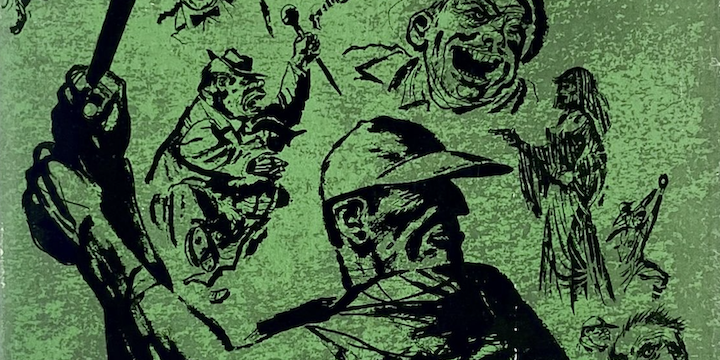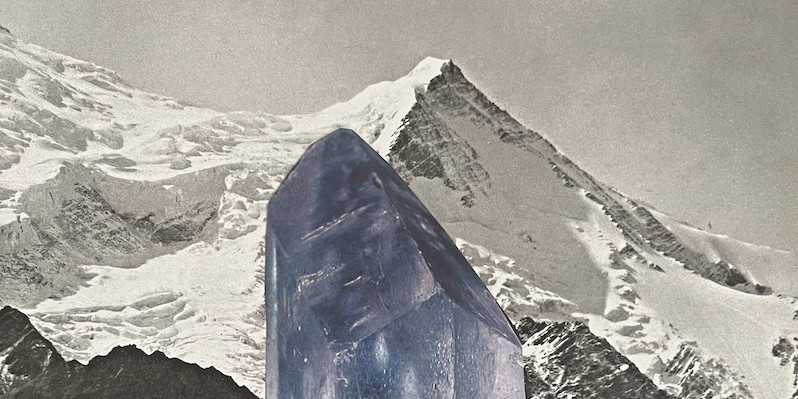She is biting her nails when I open the door, her purse pressed tightly against her breasts. As usual, I think as she walks in, head down, and sits in her usual place, Mondays and Thursdays, five o’clock: as usual. I shut the door, walk over to the armchair in front of her, sit and cross my legs, making sure I pull up my pants first so they won’t have those awful creases on my knees. I wait. She doesn’t say anything. She seems to be staring at my socks. Slowly, I pull a cigarette out of the pack in
- excerpt • June 14, 2022
- print • June/July/Aug 2022
EARLY IN ELIF BATUMAN’S NEW NOVEL Either/Or, she quotes a blurb on the front of Kazuo Ishiguro’s An Artist of the Floating World, extracted from its 1986 review in the New York Times. “Good writers abound—good novelists are very rare,” the critic theorizes, deeming Ishiguro “not only a good writer, but also a wonderful novelist.” For Either/Or’s narrator, the distinction comes as a shock. Since she was young, Selin has aspired to become a novelist, and she views much of her life to date as training for that vocation. Assessing herself according to the reviewer’s implied rubric, Selin realizes that
- print • June/July/Aug 2022
A SPECTER IS HAUNTING AUTOFICTION. The specter of ripping off your life for your novel and not making a whole goddamn thing about it. Elizabeth Hardwick’s unnamed narrator spent her Sleepless Nights in Elizabeth Hardwick’s apartment and it worked out fine for both of them. Roth had Zuckerman and, later, “Roth,” and later still Lisa Halliday had “Ezra Blazer.” There have been abundant Dennises Cooper, Joshuas Cohen, and Dianes Williams. Sebald and Bellow—just saying the names should be enough. Jamaica Kincaid gave Lucy her own birthday. Then you’ve got the New Narrative movement of the ’70s and ’80s, plus a
- print • June/July/Aug 2022
PUBLISHED IN 1974, Patricia Nell Warren’s best-selling novel The Front Runner, about the same-sex intergenerational romance between Harlan Brown, a college track coach, and Billy Sive, his star athlete, capitalized on dual booms from that decade: the running craze and the growing crossover appeal of LGBTQ+ literature.
- print • June/July/Aug 2022
ON APRIL 12, Joyce Carol Oates, who’s had a surprise second act as a social-media provocateur, tweeted, “Much prose by truly great writers (Poe, Melville, James) is actually just awkward, inept, hit-or-miss, something like stream-of-consciousness in an era before revising was relatively easy.” Like much Tweeting by truly great Tweeters, Oates’s hot take struck a nerve because it reflected the zeitgeist; whatever one’s feelings about the nineteenth-century masters, one must concede the current vogue for tightly structured novels, rendered in lucid, well-modulated prose. For a long time now, American fiction has not been characterized by any one school or approach,
- print • June/July/Aug 2022
IN 2014, the novelist and essayist Cynthia Ozick reviewed the collected fiction of Bernard Malamud for the New York Times. Ozick adores her slightly older contemporary for his bruised moral seriousness. The essay contains just one asterisk: “The reviewer has not read and is not likely ever to read ‘The Natural,’ a baseball novel said to incorporate a mythical theme. Myth may be myth, but baseball is still baseball, so never mind.”
- review • May 5, 2022
Six-year-old Marina Salles dubs her grandmother’s house on the salt-swept Monterey Peninsula “the Plastic Palace.” Protective runners cover the carpets and kitchen table, encased and safeguarded from spills. The Plastic Palace is a special nickname, something shared between Marina and her mother, Mutya, who are living there with her grandmother, Lola Virgie, in 1982. Love, here, peeks out from corners: from the “sharp tips” of the plastic, from Lola’s routines and regimens. Mutya evades domestic responsibilities, spending weekdays at college and leaving Marina in Lola’s care.
- review • April 28, 2022
I spent the last days of 2019 with family in a Panamanian duplex, across the street from a “village” of high-end apartments where men worked the yards. Fernanda Melchor’s new novel, Paradais, takes place at a Mexican luxury development that shares the Panamanian complex’s name: Paradise. The coincidence is banal, if illustrative. “Páradais,” the phonetic rendering of an English word, is a clichéd, empty signifier of colonial “luxury,” sort of like an American apartment complex called “Royal Glen” or “High Manor.” But Melchor’s novel owes less to the unimaginative naming conventions of developers than to its chief intertext: José Emilio
- review • April 14, 2022
There is a Shinto myth called kotodama that implies there are divine powers in the Old Japanese language—koto meaning “speech” or “word” and dama meaning “soul” or “ghost.” In this cosmogony, different words were believed to contain different qualities: a positive word could bring positive spirits and a negative word could wake up the demons inside. Practitioners of Shinto would erase loanwords from Chinese during their rituals to make their prayers as linguistically “pure” as possible. Nowadays, however, if you google kotodama, the internet returns links on the New Age potential of Aikido, manifesting psychology, and a video game called
- print • Mar/Apr/May 2022
THE WRITER AND THE NOVELLA were both new to me: two plosive proper nouns and one personal pronoun, adding up to just three potent monosyllables. Kay Dick (1915–2001): an indelible name, especially for a lesbian. They: her ninth book (and sixth work of fiction), published in 1977, and best summed up, per text on this slim volume’s title page, as “a sequence of unease.”
- print • Mar/Apr/May 2022
IN AN ORDINARY CLASSROOM, ON AN ORDINARY DAY in an ordinary English childhood, a girl points at a box of books and says, “Look.” Look, she says, and another girl gets up, retrieves one of the school-owned hardbacks, and pushes it into her chest: “It was your idea.” The first girl is the narrator of Checkout 19, never named, and the second is one of her classmates; the high school moment is being remembered by the narrator, embroidered even in the remembering. Look, the grown-up narrator explains, “no child says ‘Look’ without meaning for something to happen. A child’s eyes
- print • Mar/Apr/May 2022
IN AN ESSAY ABOUT NATALIA GINZBURG, the Chilean novelist and critic Alejandro Zambra writes, “When someone repeats a story we presume they don’t remember that they’ve already told it, but often we repeat stories consciously, because we are unable to repress the desire, the joy of telling them again.” Of course the compulsion to retell a story is not always situated in joy’s lofty terrain. We might repeat a story in the hopes of shrinking it to a manageable bite, or because it reminds us of another story, or to shine up disagreeable aspects of our lives, or to mock
- print • Mar/Apr/May 2022
“ALL WOMEN ARE NOT UNHAPPY,” the Japanese writer Yūko Tsushima wrote in the Chicago Tribune, but women are made to suffer more “just because they are women.” By design, a system animated by capitalism and heteropatriarchy is especially cruel to single mothers. I remember nearly nothing of my childhood, yet I harbor acute recollections of my mother waitressing or bartending while I perched primly atop a barstool, memorizing my Mariah Carey cassette and learning what humiliation borne of economic necessity looks like. The phrase “to make ends meet” has one origin in dressmaking, meaning to gather the least amount of
- print • Mar/Apr/May 2022
IN STORIES ABOUT INTERSTELLAR TRAVEL, space usually wins out over time. The accounting of minutes and hours is too petty, too human, for the vast distance between one star and another; some genres just won’t accommodate the clockface. This is true of Tarkovsky’s Solaris, in which mad astronauts prove incapable of distinguishing between past and present, as well the Swedish poem and film Aniara, about a spaceship destined for a future of endless drift—which is to say, no future at all. Few places are as interminable as outer space, which urgently raises the question of where one is while rendering the
- print • Mar/Apr/May 2022
TESSA HADLEY’S NEW NOVEL, Free Love, begins in 1967 London. The book is split between Otterley, a fictional suburb of manicured houses and back gardens, and Ladbroke Grove, the site of hippie excess, progressive dropping out, and émigré professional striving. Hadley focuses on Phyllis Fischer, a forty-year-old housewife, and her fifteen-year-old daughter Colette. The attention to these two characters, as they break slowly and then all at once from the circuits of the lives expected for them, makes up the bulk of the plot. Phyllis is elegant, the well-groomed and beautifully dressed mistress of a tidy and perfectly kept Arts
- print • Mar/Apr/May 2022
THE SCHOOLGIRLS HAVE BEGUN TO BEHAVE STRANGELY. At night, they gather to perform incantations that involve crystals and candle wax, delicately dripped. One of them hides sambuca in a mouthwash bottle and slips out for parties after babysitting jobs. Another attempts suicide by smashing a thermometer to drink the mercury within, but only succeeds in cutting herself. The last stops eating altogether, unless she can cadge food off of someone else’s plate.
- print • Mar/Apr/May 2022
IT IS TECHNICALLY POSSIBLE to write about Sheila Heti’s new novel, Pure Colour, by following the rising action. Such a review might track Heti’s main characters—father and daughter—through his death, her long mourning, their reunion in a leaf (it’s a sort of limbo), and her learning to live without him. The idea would be to shepherd readers through the novel by focusing on its most legible story line, in the hopes of making it all make sense. At the end, three or four sentences would remain to pronounce one or two judgments on how Heti perverts or expands the nature
- excerpt • December 9, 2021
At some point in moving from The Savage Detectives to 2666, Bolaño sketched a map (or diagram, or dream image) of Santa Teresa, the city on whose outskirts Cesárea Tinajero dies in the earlier book and that would become the center of his final novel. The picture (which you can find in the exhibition catalogue Archivo Bolaño 1977-2003) looks like a classic grid in a process of decomposition: names of landmarks or neighborhoods float in a disjointed space connected by gestural lines indicating streets or thoroughfares. But even in this exploded condition, we recognize how Bolaño’s imagination tends to geographical
- print • Dec/Jan/Feb 2022
ANDRÉE’S GRAVE IS ALL WRONG, Sylvie thinks. It’s covered in white flowers. This is what killed her; she was “suffocated” by whiteness. Sylvie places three red roses on top of the grave. This scene takes place at the end of Simone de Beauvoir’s roman à clef Inseparable: Sylvie is Simone and Andrée her friend Élisabeth Lacoin, known as Zaza. In real life, there must have been a casket for Zaza, who died at twenty-one, and maybe also roses, but in Beauvoir’s Memoirs of a Dutiful Daughter (1958), where Simone and Zaza’s story is recounted, we hear nothing of the casket
- print • Dec/Jan/Feb 2022
WHEN SHE WAS SIXTEEN, THE FRENCH NOVELIST Anne Serre set out to induce her high school philosophy teacher to fall in love with her. Her strategy was unconventional: “I thought that writing a book, which I would then ask him to read, was the only possible way of seducing Monsieur Rebours,” she recounted in the Times Literary Supplement last year. Though Monsieur Rebours did not succumb, Serre, now sixty-one, remains convinced that books are instruments of seduction. “Fiction, realist or not, doesn’t try to convince but to seduce,” she explained in a recent interview. “A writer’s only responsibility is to



















